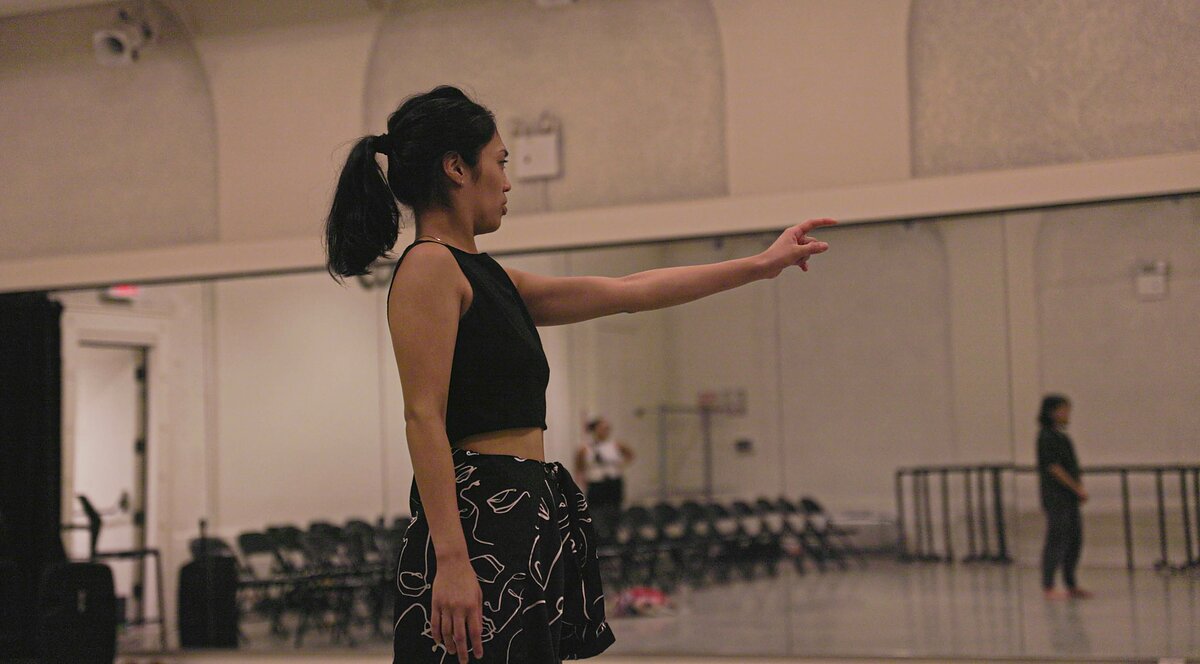Choreographer Keerati Jinakunwiphat Invites Us Into Her Process
One look at Keerati Jinakunwiphat’s calendar will tell you that she is an artist in demand. Balancing concurrent pursuits as a performer and choreographer, she remains insatiably curious about her art form. She possesses a silky quality and quiet precision as a longtime dancer with Kyle Abraham’s company, A.I.M.
Showcasing the range of her choreographic voice, she has created works for New York City Ballet, the Martha Graham School, and Whim W’him Seattle Contemporary Dance, among others. Despite working with companies far and wide, Jinakunwiphat’s dancers always appear at home in her movements, in part because of her keen awareness of what it means to perform. She centers her process around facilitating a genuine connection onstage. The atmosphere she builds often feels more akin to members of a team than a hierarchical choreographer-dancer dynamic. “Camaraderie is something I always want to be present in my work, a reminder of the humanness of it all,” said Jinakunwiphat in a recent conversation.
In 2016, Jinakunwiphat graduated from SUNY Purchase to begin an apprenticeship with A.I.M. After joining the company full-time in 2018, she premiered her first major commission, “Big Rings,” the following year. Now, in creating her second commission for A.I.M, she speaks fondly of having a home team advantage. “I feel most supported by the people at A.I.M, the people I spend the most time with,” she said. “We’re all learning, observing, and supporting, and I think it starts to show in the work.”
For this new piece, Jinakunwiphat was given the most beautiful gift an artist could ask for: time. Rehearsals were labeled “Creative Play” on the calendar, and without the pressure of a looming premiere date, she and the dancers were able to do just that.
I had the opportunity to sit in on “Illuminating the Process,” an open rehearsal for Jinakunwiphat’s new work in the storied fifth floor studio of New York City Center. She made the simple request that we perceive her new work with a curious eye, welcoming us to keep note of what we felt was appealing, confusing, and moving. Before starting the run-through, Jinakunwiphat took a pause. Quickly, she gathered the dancers into a group huddle. Shoulders pressed close and arms wrapped tightly, they resembled teammates before the final buzzer in a sports game. Someone called “1, 2, 3, break!,” A.I.M’s rehearsal director Jessica Tong pressed play on the stereo, and thus, the game began.
In a section of transitory tableaus and swirling floorwork, Jinakunwiphat’s dance lineages shone through. The subtle softness of her artistic director Kyle Abraham’s voice and the choreographic devising of her college mentor Doug Varone were foundational layers beneath the work. And Jinakunwiphat knew how to precisely employ the element of surprise. Whether it be a moment of humor or self-awareness, she embraces unpredictability.
During one particularly striking moment, a playful duet emerged; yet in the mischief, there was still care. Jinakunwiphat explained how this game began as an inside joke amongst her colleagues in rehearsal. Onstage, it invoked a sense of safety and play, knowing that your people will always do their best to catch you, but that you are strong enough to pick yourself back up too.
Amid this new creative process, Jinakunwiphat has experienced a cascade of accolades. Her most recent accomplishments include becoming New York City Ballet’s first female Asian American choreographer, accepting the Princess Grace Award for Choreography, and recognized as a Jadin Wong Artist of Exceptional Merit from A4, just to name a few. And yet, Jinakunwiphat’s instinctual reaction is to shy away from it all. “It’s overwhelming, for sure. I’m still processing it all while also currently trying to own it and enjoy it too,” she said.
Through this whirlwind period of public recognition, Jinakunwiphat expressed her gratitude for choreography as a method of self-reflection. “The beautiful part of it all is that I can process it through my art, to tell a story that is present with what I’m feeling,” she said. For her, movement is a way to reveal the layers of her inner life. “For instance, my work might not be so blatantly ‘Asian’ to some people,” Jinakunwiphat explained, reiterating a sentiment she made in a recent interview with Dance Magazine. “But it inherently is, all the things you see in the piece, it’s who I am.”
Not being seen as “enough” is a frustration shared by many minority artists who feel pressured to package and present their identities in a digestible way. Does one lean in to stereotypes and expectations for the sake of legibility? For Jinakunwiphat, having her personal experience embedded into this work is what makes it representative of her Thai heritage. Even in its beginning stages, her new work feels like a look behind the curtain for the artist.
“I just continue to lean into who I am and who I’m becoming, putting the love into my work,” she said, smiling. “But it does feel good to be seen.” And what a beautiful thing it is to be seen for all your layers; to let people give you your flowers.


